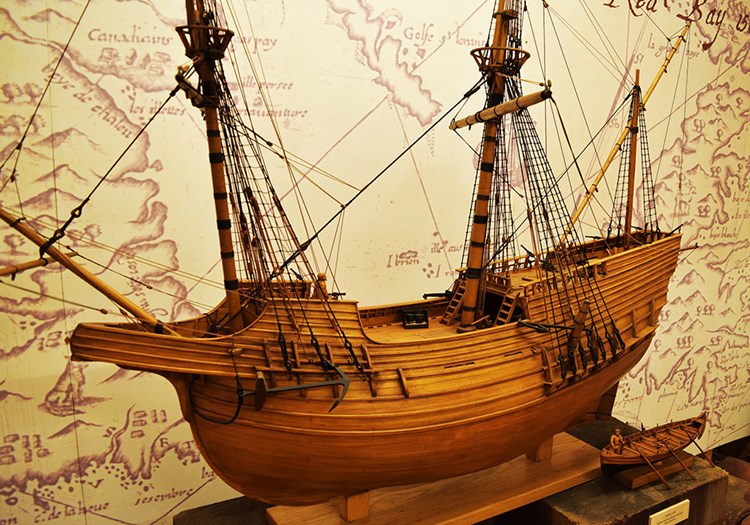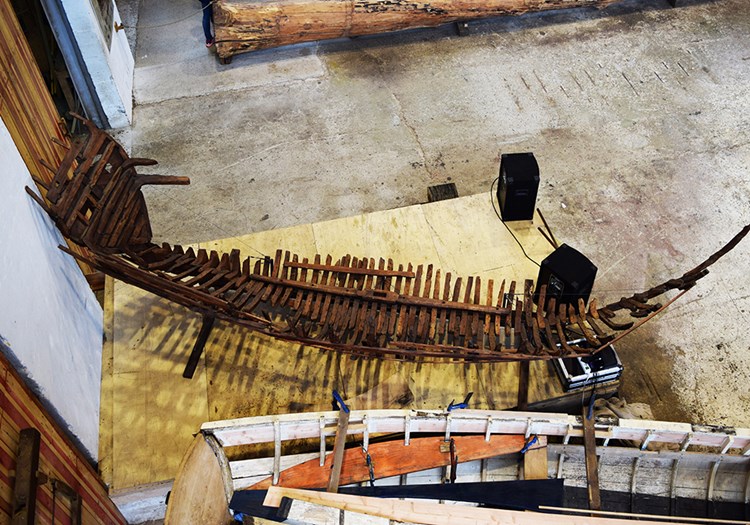PASAIA, BASQUE COUNTRY, SPAIN - In this tiny backwater fishing port that opens up to the Atlantic’s Bay of Biscay, Canadian and Basque history intersect at a small maritime museum that is hoping to recreate the past.
“Pardon the noise but the men are working very hard today,” says Mikel Leoz as he leads me through a large workshop connected to the Sea Factory of the Basques Albaola Museum where workmen are using primitive tools to shape a giant wooden beam balancing on a workbench horse.
“As you can see, the new San Juan is really starting to take shape,” says Leoz, the man overseeing an ambitious project to build a replica of an ancient whaling ship known as the San Juan, which sailed from here in the 16th century for Newfoundland but never returned.
“The San Juan sank off Newfoundland (actually the southern coast of Labrador’s Saddle Island) in 1565,” says Leoz. “Then in 1978, thanks to the research efforts of renowned Canadian historian and geographer Selma Huxley Barkham, Parks Canada divers found the (skeleton) remains of the San Juan in the waters near the town of Red Bay.

Above: Whaling ships set sail from Pasaia and landed in Canada well before the French.
“The ship’s keel was so well preserved (it’s believed it was protected for centuries under a massive iceberg), and because of that we were able to get exact specifications of the original ship, from which we are building the replica,” says the enthusiastic man.
Red Bay has a long history with Basque fishermen — between 1530 and the 17th century the small town served as an important Basque whaling station. And because several whaling galleons and four small chalupas boats used to spear the whales during that time have been recovered in Red Bay, UNESCO saw fit to designate the isolated Canadian community a World Heritage Site in 2013.
Pictures of Red Bay residents adorn a wall of the Basque museum. “These people are our friends, our brothers because they share our history,” Leoz tells me.
No one died in the sinking of the San Juan, which had a crew of about 60 men at the time. “It was caught in a storm and sank when its anchor chain broke. Some of its cargo was actually recovered later. The partial remains of the ship that the Parks Canada divers found are now on display in a Newfoundland museum,” says Leoz, who adds that while there is little documentation on the San Juan, it is believed it was on its third voyage to Red Bay before slipping below the waves.
Leoz is as much an historian as he is a ship builder and has researched the Basque people’s connection with whaling thoroughly.


Left: A replica of the San Juan. Right: The ship's skeleton remains found under the ice.
“It’s truly a fascinating part of our (Basque) history,” says the man whose greying beard makes him look like a sea captain of yesteryear. “The whale oil was used for lamps and in the making of soap.”
After whale stocks depleted off the Spanish and French coasts in the early part of the 16th century, the Basque began hearing about fertile waters off “Terra Nova.”
“So they set sail (a journey of 6,300 kilometres that took between two and three months to complete) and couldn’t believe what they found when they arrived — Red Bay was teaming with whales,” says an excited Leoz.
“The Basque were able to survive because they befriended the native people of Red Bay and taught them many Basque words. In fact, when French explorers like Jacques Cartier and Samuel de Champlain landed in Newfoundland, the indigenous people greeted them using Basque words like ania (brother) because they thought all Europeans spoke Basque.”
Leoz proudly shows me around the compact museum which features displays showing the techniques the Basque used to harpoon the whales. Large wooden barrels used to store the precious whale oil are also displayed throughout the museum —each barrel could hold more than 180 kilograms of whale oil.


Above: Workmen using primitive tools to recreate the new San Juan, right.
The entire Basque country is backing the project and towns and cities in this loveliest part of the autonomous region are helping in the construction of the replica — the oak and beach wood used in the building of the original whaling ships is being harvested in nearby forests so the new San Juan can look just like the original. Tar used to bind the planks was brought to the shipyard museum on carts pulled by oxen — “just like they did in the 1600s,” says a smiling Leoz, who says that ceremony brought out the whole town.
The whole project is expected to cost 3.5 million euros ($5 million Cdn.), and it has the financial backing of UNESCO, the EU and the Basque government.
Leoz reports the new San Juan will be ready to set sail by 2020.
“We are hoping to sail it to Newfoundland but I think we’ll need a more modern vessel alongside just in case,” smiles Leoz as we reach the top of the giant scaffolding where the yet to be completed replica is cradled.
Even in this early state, the San Juan replica looks majestic.

Above: Pictures of the citizens of Newfoundland;s Red Bay hang in museum.
As we leave the museum complex, I see a group of young sailors crowded in a small powerboat heading in the direction of Pasaia’s harbour that opens to the sea. The tradition of Basque fishermen is being kept alive in this small town on many different levels.
About the Author
Marc Atchison is a veteran journalist and a seasoned traveller with more than 20 years of travel writing experience. As the former Travel Editor of the Toronto Star, Canada's largest newspaper, and now Editor-in-Chief and Senior Writer for TraveLife magazine (Canada) and travelife.ca, Marc has been to over 100 countries in the world. Japan is one of his favorite destinations and he's been there on numerous occasions.